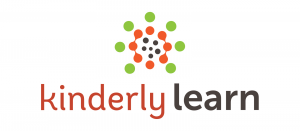We are all used to observing children as part of our daily work, but it is also great practice to observe your own setting from time to time.
Just standing back and making the time to observe how your space is used by both children and adults is a really valuable exercise. Reflect on what you see and ask yourself some of these questions:
★ How is the space used?
★ Are there areas that children never go to or only spend a short time in? Why is this?
★ Are there areas that you hadn’t considered as a ‘child space’ but that children always take toys to?
★ Is there an area where fights and squabbles always seem to start?
★ How are children flowing through the space? Do they get stuck in a bottleneck? Have they turned a piece of furniture into a roundabout to run around?
★ How are children accessing outside space? Can they easily access their coats?
★ What happens at key times in the day, such as lunchtime, nap time, pick up or drop off?
To make sure you are observing your own childminding setting well, try our top tips:
Do it when your children are engaged in a freely chosen activity
You will learn much more about their interests, characteristics of learning, and their abilities when they are engaged in something they have chosen to do.
Stick to the facts
Remember you are collecting evidence, not making a judgement. Just record what you see (not what you think is happening).
Make it meaningful
If you already have six observations of the same thing you don’t need to do another as you won’t be learning anything.
Note the date and time
It is crucial you can pinpoint when the observation was carried out.
Annotate photos
This will help you to explain what they are showing. Remember to keep it factual.
Don’t observe against a checklist
Not only will this bias your observation, but you may miss all the great stuff that will help you to support the child’s learning and development.
Capture the child’s voice
Write word for word what the child says, or for younger children, describe clearly how they make their wishes known, or what they were doing.
Observation doesn’t need to be time-consuming
Keep post-it notes with you and when you observe something, simply note it down. In this way, you can easily take observations as part of your daily routine for both your key children and your colleagues without the need to remove yourself from the care of the children.
Set aside time for longer observations
This will ensure you won’t be interrupted.
Every week, Kinderly Learn offers more great tips like these through checklists, fact sheets and expert videos.
Click here to try a 14-day free trial.
